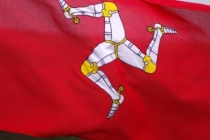Mysterious Remains Of The Pagan Lady Found In A Manx Castle
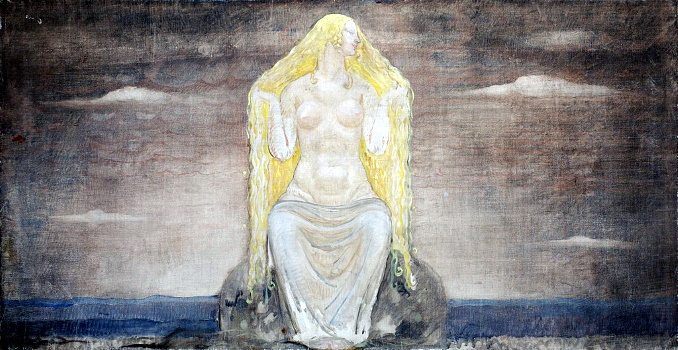
During excavations the remains of a 10th century woman was uncovered in a stone lined grave at Peel Castle (Manx: Cashtal Purt ny h-Inshey) on the Isle of Man (Manx: Mannin). Buried with her was a stunning necklace, which retained the superb colours of glass, amber and jet. There were also other interesting and mysterious objects beside her. Amongst them was an ammonite fossil. Ammonites are creatures that lived in the seas between 240 - 65 million years ago, when they became extinct along with the dinosaurs. This could possibly have been a talisman. She also had a miniature mortar and pestle, a long iron rod down by her side covered in textile, feathers and seeds, and feathers from a goose wing were in the grave.

These grave goods, along with other items found with the body, point to something special about this mysterious woman from the Viking Age. She became known as The Pagan Lady of Peel. It is thought that she could have been one of the women who undertook the mystical Viking role of ‘seer’ which is a person of supposed supernatural insight who sees visions of the future. Among the Vikings they were called Volva, a pagan sorceress, who was buried with the tools of her trade. It seems that Volva were treated with great respect in Viking society. Their power appears to be related to the practice of Seidr magic, known in Old Norse as seiðr . It was a type of magic that could both foretell and also shape future events. Although Seiðr practitioners could sometimes be male it was predominantly seen as a female power. The Norse Goddess Freyja was a seiðr practitioner. It is perhaps not surprising that the Isle of Man, with its strong Norse–Gaels links, would also be home to a Volva and powerful ‘seer’, as well as a worker of Seidr magic.
Located in the north of the Irish Sea, the Isle of Man, it's Manx Gaelic name, Mannin, derived from the Celic sea god Manannán, is almost equidistant between the countries of England to the east and Ireland to the west. Wales is situated some distance southeast of the Island and its nearest geographical neighbour is Scotland just 16 miles (26 km) to the north. The earliest inhabitants of the Island to leave traces were the hunter-gathering people of the Mesolithic (middle stone age) period, 8000 BC - 4000 BC. There are a number of burial grounds and Neolithic chambered tombs in various places on the Island. There is no evidence that the Romans ever settled on the Isle of Man. However, records and the remains of Viking rule are very clear and widespread.
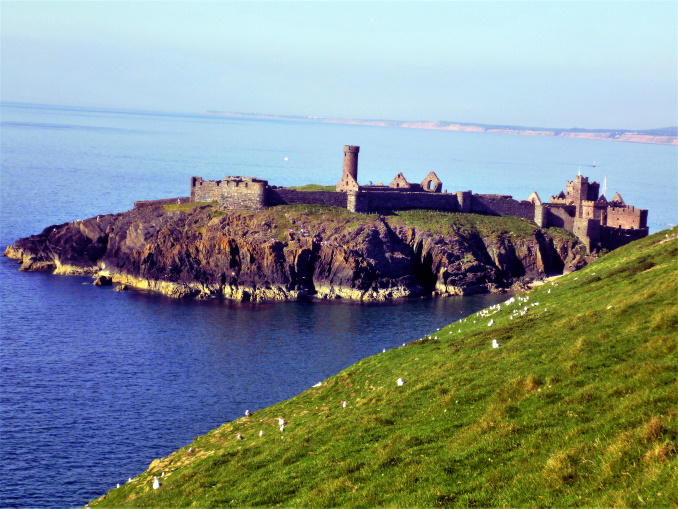
Amongst the many places of historical interest is the small island off the Manx west coast known as St Patrick’s Isle (Manx: Ellan Noo Perick). Archeological studies have revealed permanent occupation on St Patrick's Isle dating to the Late Bronze Age. The Manx Bronze Age dates from 2000 BC - 500 BC. It is to Patrick’s Isle where some say St Patrick first set foot in the Isle of Man in 444 AD. and was said to have appointed the Celtic missionary St German (approximately 410 AD to 474 AD) who oversaw the further development of the Church on the Isle of Man.

The remains of buildings belonging to a Celtic monastery, possibly dating from the 6-8th centuries can be seen on St Patrick’s Isle. Dominating these remains stands the Irish style round tower; early medieval stone towers of a type found mainly in Ireland. Only three original such towers exist outside of Ireland: two in Scotland and this one on St Patrick’s Isle. The first known fortification on St Patrick’s Isle came after the arrival in 1098 of the Viking chieftain Magnus Olafsson (Old Norse: Magnús Óláfsson), better known as Magnus Barefoot who was King Magnus III of Norway from 1093 until his death in 1103 and also King of Mann and the Isles from 1099 to 1103. He was called Magnus Barefoot/Barelegs due his adoption of Gaelic type clothing leaving the legs bare. Magnus campaigned around the Irish Sea from 1098 to 1099.
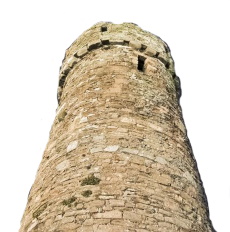
The medieval Chronicles of the Kings of Mann and the Isles tell us that he saw to the erection of two wooden prefabricated forts, one now believed to be in the South of the Isle of Man and the other on St Patrick’s Isle. The fortification was further strengthened and added to in subsequent centuries. The Viking Age was to have a significant impact upon the Isle of Man. There is still a considerable amount of Viking influence to be seen in the Island, in the form of castles, burial mounds and settlements. A clear legacy of the Manx Viking Age legacy is the modern Manx parliament, Tynwald, which has its roots in this period. Their impact remains strong.
Vikings were a maritime people and first arrived on the Isle of Man in the 800s firstly trading and eventually settling. The Island's strategic location in the middle of the Irish Sea was an important factor in this. Silver was the main currency for trade, in the form of ingots, jewellery and coinage, and a relatively large number of silver hoards have been found on the Island. Viking ship burials have also been discovered. Excavations on St Patrick's Isle in the 1980's led to a number of pagan graves from the Viking period being found. Amongst these graves it was here that the particularly intriguing and mysterious discovery of the grave of the 10th century woman, buried at around 950 AD, was made.
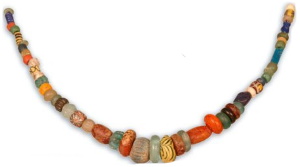
She was buried with a number of items that have resulted in it being considered the richest Viking Age female burial in the British and Irish Isles and outside of Scandinavia. She has become known as The Pagan Lady of Peel. The woman was buried with a fine and rare necklace made up of 73 glass beads sculptured from stones from over a wide area of Europe and the Middle east. There were also a number of other items and various charms in her grave. Including two pieces of stone which looked like a tiny pestle and mortar and she also had a long iron rod down by her side with seeds and feathers. An iron cooking spit had been placed by her side. It had been wrapped in woollen cloth. Goose feathers were found on the spit. Other items buried with her included knives, a pair of shears used for cutting cloth, and a leather and bronze pouch.
It is clear that this is a grave of a wealthy woman, but more than that. The range of items found with her suggest that this could also be the final resting ground for a wise woman of high standing. A woman that would have dispensed advice and could have been seen by her local community as having special powers. A Volva and powerful ‘seer’ that was skilled in the working of Seidr magic. The Pagan Lady of Peel only adds to the magical quality and mystery of Cashtal Purt ny h-Inshey - Peel Castle.
Further Reading
Celts and Vikings - Scandinavian Influences on the Celtic Nations
- Manx
- English

